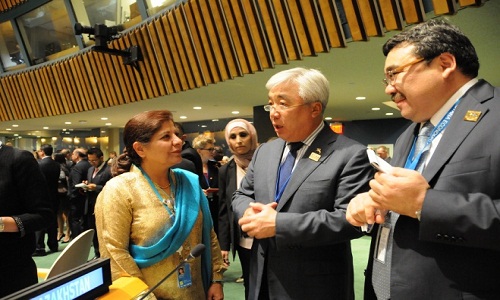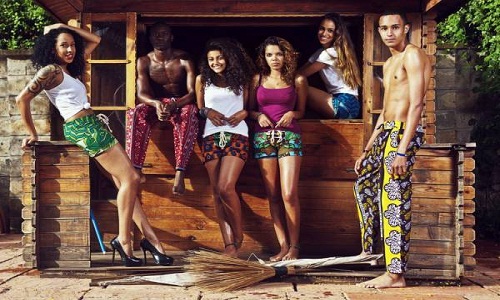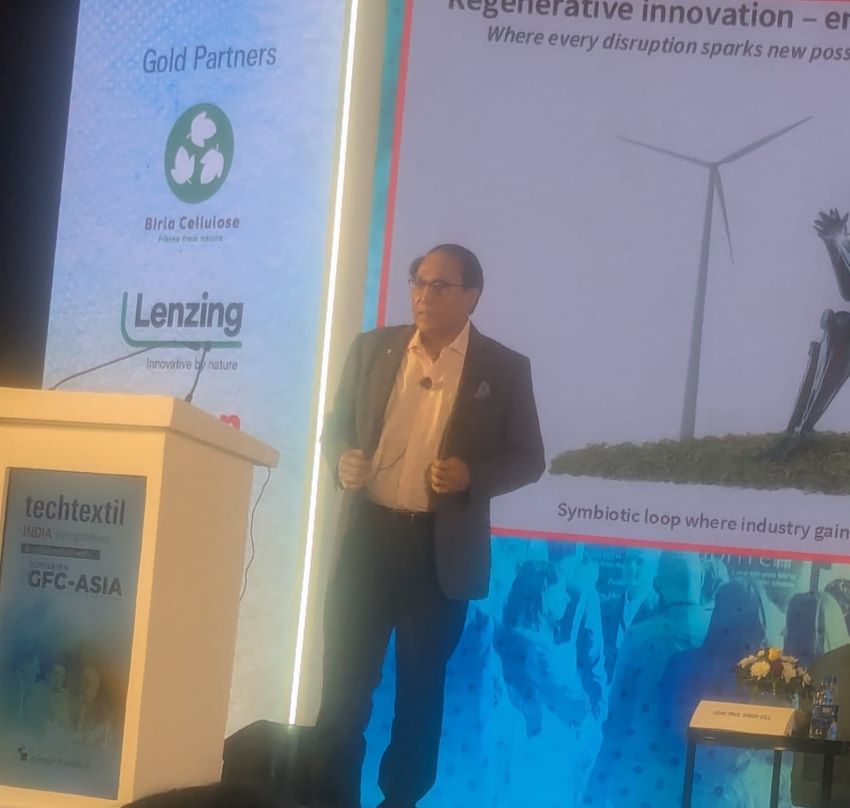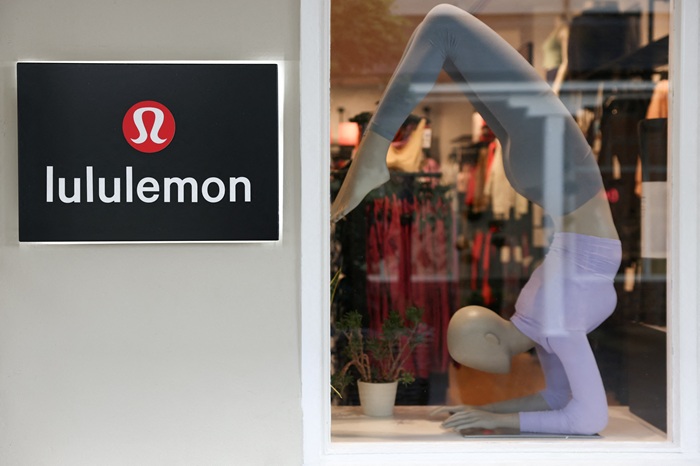FW
"Under the Agreement that supplements the Host Country Agreement, the Government of Kazakhstan has committed to provide the premises for the ESCAP’s Sub regional office for North and Central Asia (SONCA) along with a recurring annual grant for operational and programme costs of the office."

The United Nations’ Economic and Social Commission for Asia and the Pacific (ESCAP) and the Government Kazakhstan have affirmed their commitment to work in unison to address the critical social and economic development needs of the people of North and Central Asia by way of a new Agreement signed in Bangkok today.
Under the Agreement that supplements the Host Country Agreement, the Government of Kazakhstan has committed to provide the premises for the ESCAP’s Sub regional office for North and Central Asia (SONCA) along with a recurring annual grant for operational and programme costs of the office.

Incidentally, the office was opened in Almaty on 5 July 2011 upon the initiative of the Government of Kazakhstan and in line with a United Nations General Assembly Resolution to better address development priorities of member states and to strengthen regional cooperation and integration for accelerating progress towards achieving inclusive and sustainable development.
According to United Nations Under-Secretary-General and Executive Secretary of ESCAP, Dr. Shamshad Akhtar the signing ceremony marks an important step in the UN’s journey towards making a meaningful contribution to the development of the North and Central Asian sub-region.
He concluded by saying that the conclusion of the Agreement would help in cementing the status of the office and provide assurances for its continued functioning, reinforcing the proposed role of Almaty as the hub for United Nations offices in Central Asia.
H.E. Mr. Marat Yessenbayev, Ambassador Extraordinary and Plenipotentiary of Kazakhstan to Thailand and Permanent Representative to ESCAP observed that the day’s ceremony was an important step in the expansion and deepening of cooperation between ESCAP and the countries of North and Central Asia.
He added that the agreement would bring upon Kazakhstan even greater responsibility in his country’s work in different UN institutions.This is especially important given the fact that Kazakhstan has become a non-permanent member of the UN Security Council, he added.
SONCA works with Armenia, Azerbaijan, Georgia, Kazakhstan, Kyrgyzstan, the Russian Federation, Tajikistan, Turkmenistan and Uzbekistan using its normative and analytical work, policy advocacy and capacity-building activities, as well as promotion of regional cooperation to help speed up regional progress towards the Sustainable Development Goals (SDGs). Afghanistan participates in the activities of the NCA as a member of the United Nations Special Programme for the Economies of Central Asia (SPECA).
India has imposed anti-dumping duty on import of Purified Terephthalic Acid (PTA) from China, Iran, Taiwan, Indonesia and Malaysia for a period of five years. The imports of PTA will now attract an anti-dumping duty in the range of US$ 83.08 per tonne to UDS$ 168.76 per tonne.
PTA is a white free flowing crystalline powder that is the primary raw material for the manufacture of polyester chips. This in turn is used in a number of applications in textiles, packaging, furnishings, consumer goods, resins and coatings.
In December last year, the Revenue Department had imposed provisional anti-dumping duty on PTA imports after an investigation found that the chemical was being imported below its normal rate.
However, the PTA Users Association has demanded the Union government to withdraw its proposal for imposition of the duty on the import of PTA. The association says that the anti-dumping duty will have a negative impact on over 20,000 small and medium polyester fiber and polyester yarn manufactures in the country.
This will also further affect and might end the competition within the industry. Currently, the polyester fiber industry is working at just 60 to 70% capacity utilization because of tight supply of PTA and the imposition of anti-dumping duty will bring down capacity utilization further.
Anti dumping on PTA is not new. It is just that the old notification was valid till mid-June and the renewal got late. Local producers have been charging 25 dollars per ton on international prices on account of anti dumping duty. They are not charging it against advance licence for yarn exports.
Till now there are three producers of PTA namely Reliance India Limited, Indian Oil Corporation Ltd. and Mitsubishi Chemical Corporation (MCC). JBF Industries is also in plans to start PTA production in the next few months.
Protesting against the company’s worsening management and demanding retroactive profit shares that are eight years late, dozens of workers of KCG Textile,Egypt started an open-ended strike last Sunday.The KCG factory is situated in the industrial area of 10th of Ramadan City.
The workers said that they would continue the strike until they are called on the negotiation table to sit with the company’s executive leaders and not the current management. They accused the latter of not paying out profit shares to the workers.
While focusing their feud on the management, the workers demanded the formation of an independent syndicate to ensure their rights and act as an advocate in front of the company and the application of a social security system to protect the workers from forced suspension.
KCG is one of the largest international Turkish companies working in the field of textiles and energy. After hearing about the strike, riot police surrounded the company. No confrontation between the workers and the police took place.
In 2012, KCG expressed its desire to build an industrial compound in Sinai with an investment of $400 million.
For the third year in a row, the US has kept Bangladesh out of its Generalised System of Preferences (GSP) list of beneficiary countries for trade privileges, on grounds of poor labour rights.
Ten more countries viz Ecuador, Fiji, Georgia, Indonesia, Iraq, Niger, the Philippines, Thailand, Ukraine and Uzbekistan also feature in this list, mostly on account of poor labour rights record.
Incidentally, the United States Trade Representative (USTR), the chief trade negotiation body for the US government updated the list of beneficiaries for the GSP scheme only last month.
Bangladesh was suspended from the GSP scheme in April 2013 on grounds of shortcomings in workplace safety and poor labour rights in the garment sector after the infamous Rana Plaza fire tragedy in which more than 1,000 people expired. The Obama administration then provided Bangladesh a 16-point action plan to win back the trade benefits.
Dhaka has already handed in its progress report on the action plan but it fell short of the USTR's expectations.
Before the suspension of GSP, Bangladesh used to annually export nearly $36 million worth of products to the US under the 40-year-old GSP scheme under which the US allows duty-free import of nearly 5,000 products from 122 beneficiary countries and territories.
Indonesia’s Import Identification Number (API) chairman Ade Sudrajat has said that rising food prices have forced people of Indonesia put aside their clothing preferences.
The absorption of the domestic market, up to May, decreased ten per cent compared to that of the same month in 2015. This information is based on a data received from the Indonesian Textile Association (API).
According to the API chairman, the performance of the domestic market this year was far worse than that of last year. It was a sorry plight to notice that the rise in food prices rise has affected the purchasing power of the people.
Fortunately, the export market did not go down. In the period from January to April, the value of exports of textiles and textile products reached USD 3.96 billion. That figure is relatively stagnant compared to the same period last year.
Meanwhile, the total value of exports reached USD 12.28 billion. The performance of Indonesian textile exports stagnated because of the competition from Vietnam which recorded export value of USD 30 billion in the first quarter of this year.
United States is still the main export market of textile products Indonesia. Its export reached 36 per cent followed by the EU with 14 per cent. Textile exports to the EU fell 20 per cent compared to that of last year.
Bexit is already impacting the high street. According to the figures released by accountancy firm BDO reveal a 3.6 per cent decline in year-on-year sales in June - the worst in more than a decade.
The fashion sector experienced its second lowest monthly figure so far this year, as sales fell 4.9 per cent compared to June 2015. Homewares were hit, too, dropping 6 per cent year-on-year, while lifestyle goods inched down by 0.2 per cent.
BDO data showed that overall sales grew 3.8 per cent year-on-year in the first week of June. But the aftermath of Brexit bruised retailers as the month wore on, plunging 3.1 per cent in the second week as consumers started to worry. By the final week of June - two days after the referendum - sales were down 8.1 per cent year-on-year.
Incidentally, June marked the fifth month in a row that the British high street reported negative growth. But it was the first time in almost a year that lifestyle, fashion and homewares all recorded declines in the same month. According to the latest BRC-Nielsen Shop Price Index, June was also the 38th month of deflation in the U.K.
According to Sophie Michael, head of retail and wholesale at BDO, many retailers may have hedged against the falling pound for the short term, but if sterling stays at these levels, the cost of importing goods and further erosion to margin may need to be passed onto the consumer.
"The garment industry - a labour intensive, low-skill manufacturing process - has been one of the catalysts for the economic growth in the Asian countries for several decades. There is however a twist. The garment manufacturing sector is gradually slowing down among the Asia tigers -promising opportunities for other markets such as Kenya where aspects of production cost such as labour inflation remain slightly lower. "

Garment manufacturing sector is gradually slowing down among the Asia tigers, promising opportunities for other markets such as Kenya where aspects of production cost such as labour inflation remain slightly lower.
The garment industry - a labour intensive, low-skill manufacturing process - has been one of the catalysts for the economic growth in the Asian countries for several decades. There is however a twist. The garment manufacturing sector is gradually slowing down among the Asia tigers -promising opportunities for other markets such as Kenya where aspects of production cost such as labour inflation remain slightly lower.
According to analysts, China will shed about 85 million jobs at the bottom end of the manufacturing sector between now and 2030. Today, as production costs rise in Asia, Sub-Saharan Africa offers the last frontier in the search for new apparel sourcing markets. With a strong apparel tradition, a large and entrepreneurial workforce, and an attractive business environment, Kenya is a compelling new sourcing, a new study report on the Kenyan textile and fashion industry says.
Advantage Kenya

This opportunity coupled with the apparel exports under the African Growth and Opportunity Act (AGOA) - a United States preferential market access deal for qualifying sub-Saharan countries, improved infrastructure and cheaper power bodes well for Kenya garments sector. Fortunately for Kenya, its textile industry is just picking up after decades of a slump due to mismanagement and stiff competition from cheaper imports and second-hand clothes.
Data from the Kenya National Bureau of Statistics (KNBS) showed that Export Processing Zones (EPZ) recorded a 12.1 per cent growth in sales in 2015, underlining a resurgence of the sub-sector that is expected to be a key pillar of Kenya’s development. The growth was mostly driven by apparel exports under AGOA.
The opportunities in Asia give Kenya a chance to grow its textile export volumes and designs in the global scene. Kenya also has a deep well-spring of talent among fashion designers and small tailors, who can serve both the global, domestic, and regional markets, says the study report by international development firm, Hivos Limited and Equity Bank.
Recently, fashion enthusiasts converged in a Nairobi hotel to review the status of the Kenya textile industry and brainstorm on how they would work to tap on the unfolding opportunities not just internationally but also locally. There is however plenty of work lying ahead if Kenya is fully to exploit opportunities both domestically and abroad.
The real issues
Despite hosting numerous shows, boasting an avalanche of bloggers and the rich talent exhibited by local fashion designers, the study by Hivos and Equity Bank revealed that the textile industry in Kenya is quite fragmented, which has prevented it from blooming.
As per the report, most of the local players operate in isolation with no linkages to the retail platform. Data shows that there are about 75,000 micro and small companies, including fashion designers and tailoring units. An estimated 80 per cent of them operate in the informal sector and use rudimentary equipment.
More than three quarters are owned by women while 91 per cent sell solely to the local market while most of the upcoming designers have a growing desire to be famous first rather than being rich first, the study further said.
This potential remains largely untapped due to systemic and structural weaknesses of the T&C (Textile and Clothing) industry, which, despite its rich history of over 100 years, remains fragmented, unco-ordinated and misaligned. The sector is skewed towards cottage industries and low value-addition garment making, with an attendant steady decline in the textile sector, the study further says.
Government’s strategy
Meanwhile, the Kenyan government’s medium-term economic growth strategy, Kenya Vision 2030, has identified the textile and clothing sector as a potential key driver of the country’s industrialisation.
The sector currently comprises 22 large foreign owned companies operating in the Export Processing Zones (EPZs), 170 medium and large companies, eight ginneries, eight spinners, 15 weaving and knitting companies, nine accessories manufacturers and over 75,000 micro and small companies, including fashion designers and tailoring units.
It spans the Fiber to Fashion (F2F) value-chain (cotton cultivation, ginning, spinning, weaving, knitting, dyeing and finishing, garment and accessories manufacturing). The Industrialisation ministry is seeking to adopt a new model of Special Economic Zones (SEZs) to replace the EPZs whose performance has been termed disappointing.
Kenya is currently setting up several SEZs in Mombasa, Lamu and Kisumu. The Kisumu facility is aimed at growing export trade within the East Africa Community (EAC) and the Great Lakes region.
SEZs shall be subject to a reduced corporation tax of 10 per cent for the first 10 years and 15 per cent for the next 10 years. Unlike EPZs which are limited to manufacturing, commercial and service activities, the SEZ Act provides a long non-exhaustive list of activities.
They include business processing outsourcing, manufacturing and processing; livestock marshalling and inspection, refrigeration, deboning, value addition; and services and activities to facilitate tourism and recreation sector.
However, the World Bank says that the success of the SEZs will depend on provision of proper infrastructure - both within the zone and connecting it to the outside world. Among the factors that have previously held back the success of the EPZs was a poor transport infrastructure and high electricity costs.
As Sustainable Apparel Coalition (SAC) make moves to work more closely with European policy initiatives, IWTO’s engagement with the SAC proves more important than ever, according to plans presented at the 2016 SAC full membership meeting held 8-10 May in Copenhagen, Denmark.
SAC will seek to position its Higg Index, a standardised supply chain benchmarking tool, as ‘a primary point of reference’ for government regulations and standards such as the EU’s Product Environmental Footprint (PEF) and Garment Initiative.
A SAC member since 2012, IWTO contributes to SAC’s task teams and engages in the technical development of the Higg Index where wool is affected. Representing IWTO, Professor Beverley Henry (outgoing Chair of the Sustainable Practices Working Group LCA TAG), Kjersti Kevisth (SPWG Member) and David Maslen (SPWG LCA TAG Observer) were among the 400 delegates attending.
SAC has approximately 170 members representing 40 per cent of the apparel and footwear industry, coming from every segment of fashion, manufacturing and retail, as well as trade organisations such as IWTO and NGOs, academic research groups, and sustainability service providers.
SAC’s primary goal is to move the global apparel and footwear industry towards greater sustainability, primarily through use of its Higg Index. As a SAC member, IWTO participates in the development of the Higg as it relates to wool, as well as other key task teams.
June PTA output of China was about 2,830 KT, down 86 KT month on month. With import volume expected to be 45 KT, China PTA supply may increase by 2,875 KT. As for demand, the output of polyester products totaled about 3,160kt, consuming 2,718kt of PTA, plus 80kt of PTA consumed in other applications as well as 100kt of PTA exports, PTA demand totaled about 2,900kt. Thus, PTA social inventory may decrease by about 20-30 KT.
As to supply side, few PTA plants have turnaround plans for July. Jialong put its 600kta PTA unit under maintenance while Hanbang, Mitsubishi and Urumqi plan to restart their units. With Jul PX ACP settled at $800/mt, PTA margins recovered and if Yisheng postpone or cancel the turnaround plan of the 2.25 million unit, PTA output of July may reach up to 2.9-2.95 million tons. If Yisheng sticks to the plan, PTA output shall be around 2.8-2.85 million tons.
As to the demand side, polyester operating rate is at 82 per cent at the beginning of July. Based on concerns of G20 regulation and firm crude oil market, plants kept steady operations. Assume average polyester operating rate at 80%, PTA inventory may increase somewhat.
Judging by latest data, total inventory in warehouse, port and plants remained stable. Warehouse inventory stayed high but plant inventory was at a medium-to-low level except for a few ample-supply plants.
Brandix CEO Ashroff Omar has said that the Sri Lankan apparel sector has room for further growth despite the country reaching middle income status.
He highlighted some of the intrinsic advantages of the apparel industry in the country as a tool for growth and provincial development and stressed the importance of viewing Sri Lanka’s position from a South Asian regional perspective in order to compete effectively in an evolving global market.
The CEO maintained that Sri Lanka’s productivity, skilled labour force, logistics offering and compliance with key sustainability and labour practices, positioned the country as the ideal location to become a hub for the region. He further called for an enabling policy environment and an investment climate to make this vision a reality.
Omar was speaking at the inaugural session of ‘InsideTrack,’ an exclusive, invitation-only series featuring veterans of Sri Lanka’s business, policy-making and development landscape, organised by Asia Securities, one of Sri Lanka’s leading stock broking and research firms. This particular session focused on the topic ‘How will the Apparel & Textile sector evolve in the next 3-5 years?’ He pointed out that the European Union (EU), as a region, was the world’s second largest exporter of apparel, second only to China with a share of 26.3% in 2014. As such, he contended with the view that the apparel industry could not support high-paying jobs was a myth.
Given Sri Lanka’s niche positioning as a high quality supplier, he opined that the country could position itself higher on the value chain, as an apparel hub of the South Asian region. He also showcased statistics that the growth in the apparel industry will continue, boosted by population growth and rising affluence. Accordingly, the global apparel industry, if it continues at the current pace of growth, will reach $ 834 billion in 2030 from $ 483 billion in 2014. Brandix CEO Ashroff Omar foresees apparel sector maintaining strong growth momentum.
According to Omar, the South Asian region possesses the intrinsic advantages of having the largest population, largest cotton and is a textile base and a skilled talent pool which could enable it to become the leading sourcing region for the world’s top apparel brands.












